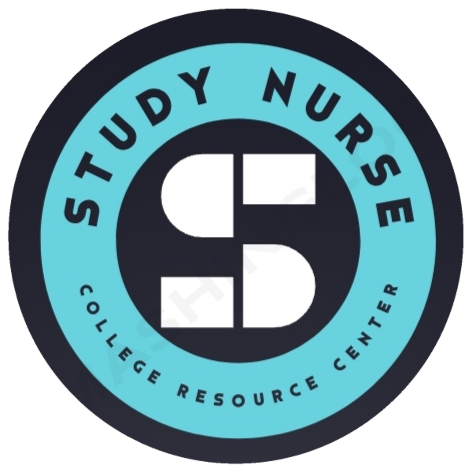Centers for Disease Control and Prevention
Communities benefit from interventions initiated by community-based health organizations. One such entity is the Centers for Disease Control and Prevention that continues to play proactive roles in ensuring that individuals and populations access the best prevention and treatment services. With over 70 years of dedication to serving communities, CDC remains a leading organization committed to addressing the health needs of the most vulnerable populations.
CDC’s Mission and Vision
CDC leads in organizations dedicated to making a difference in the lives of millions of people across the world. The mission and vision describe an agency that understands the need to save lives and protect people from different health burdens. The vision is to equitably protect individual and population health, safety, and security (CDC, 2022a). On the other hand, the mission is to work 24/7 to safeguard people from health, safety, and security threats associated with chronic, curable, preventable diseases and human errors. Thus, more people benefit from CDC’s interventions supported by the integration of critical science and health information.
CDC’s response to a cholera outbreak in Haiti highlights commitment to making a difference in the lives of millions of vulnerable people. The agency responded by collaborating with the Ministry of Public Health to control the outbreak and safeguard individuals from hospitalization. Specific interventions included, supplying safe drinking water to protect individuals against unsafe sources and untreated water. CDC also ensured that individuals benefitted from stronger surveillance, timely case management, targeted vaccinations, risk communication and community engagement, and emergency water treatment.
Get Expert Help with NURSFPX-4060
CDC Commitment to Promoting Equal Opportunities
CDC’s response to crisis and health threats in the most vulnerable communities highlights commitment to creating equal opportunities for everyone within and beyond the United States. The agency emphasizes the need for compassionate, respectful, and dignified response to individual and population needs. CDC’s policies on non-discrimination, equal employment opportunities, and fair allocation and distribution of resources makes the organization dedicated to improving health and quality of life. (CDC, 2022a) Thus, everyone regardless of their social, economic, and political status gets the chance to benefit from CDC’s interventions.
Equitably addressing social determinants of health and chronic diseases is among CDC’s strengths. The agencies response to Ebola threats in Uganda demonstrates commitment to ensuring that people have the best conditions to allow them grow, live, and fulfill other obligations (CDC, 2023). This way, everyone has equal opportunities to be healthy due to fair and just chances. The agency collaborated with the Ministry of Health and local health organizations to enhance surveillance, preparedness, and ensure rapid detection and response to cases.
Funding and Policy Aspects
CDC’s roles within and beyond the United States depend on adequate financial, administrative, and technical resources. The agency largely relies on contracts and inter-agency contracts to access funds for different projects (CDC, 2021). Similarly, CDC’s access to grants and cooperative agreements streamline efforts towards scaling interventions including reaching out to the most vulnerable and under-served populations. Congressional support is among the priorities for CDC to access enough funds for strategic priorities (CDC, 2022b). This way, the organization provides budgets for approval to the Congress. Comparative data allows Congress to familiarize with the agency’s resilience in addressing health threats. For transparency, CDC operates under the Federal Funding Accountability and Transparency Act (FFATA) and anti-lobbying restrictions. The legislations ensure that the organization remains committed to achieving strategic priorities based on fairness and diligence. CDC also benefits from the Prevention and Public Health Fund. The provision is part of the Affordable Care Act designed to expand the agency’s funding streams and improve the nation’s health system. This way, CDC benefits largely from resources available to respond to negative determinants of health such as the rising cost of care. The incentives enhances sustainability in reducing leading causes of deaths, detecting threats, and scaling evidence-based strategies within and beyond the United States.
CCD’s Interventions in Local Communities
CDC responds to the needs of individuals and populations across the world. One community intervention entailed strengthening water, sanitation, and hygiene workforce in Sierra Leone. The agency responded to concerns over lack of basic sanitation by training public health officials to detect and respond to waterborne conditions such as cholera and typhoid (CDC, 2019). The trained teams then engaged community health officers working on the frontlines of disease outbreaks across Sierra Leone. CDC’s role in addressing antibiotic resistance in India also demonstrates commitment to reaching out to the most vulnerable populations. The agency engaged India’s Ministry of Health to address challenges such as uncontrolled access to antibiotics, ineffective infection prevention and control, and rising threats of communicable diseases (CDC, 2018). The development of national networks of healthcare providers ensured that more people understood appropriate use of antibiotics.
Conclusion
CDC’s activities remind nurses about their frontline roles at beside, organizational, and community levels. Nurses acknowledge their relevance as part of interdisciplinary teams intended to strengthen disease prevention and treatment. This way, nurses use their knowledge and skills to respond to threats that undermine individual and population health.
References
CDC. (2022a). About CDC. U.S. Department of Health & Human Services. https://www.cdc.gov/about/organization/cdc-moving-forward.html
CDC. (2018). Antibiotic resistance in India. Department of Health & Human Services. https://www.cdc.gov/ncezid/stories-features/global-stories/ar-india.html
CDC. (2022b). Award terms & conditions, federal regulations and policies. U.S. Department of Health & Human Services. https://www.cdc.gov/grants/federal-regulations-policies/index.html
CDC. (2021). About CDC Funding. U.S. Department of Health & Human Services. https://www.cdc.gov/funding/about-cdc-funding/index.html
CDC. (2023). Ebola outbreak over in Uganda. U.S. Department of Health & Human Services. https://www.cdc.gov/media/releases/2023/s0111-ebola-outbreak.html
CDC. (2019). Strengthening water, sanitation, and hygiene workforce in Sierra Leone. U.S. Department of Health & Human Services. https://www.cdc.gov/ncezid/stories-features/global-stories/strengthening-wash-in-sierre-leone.html


